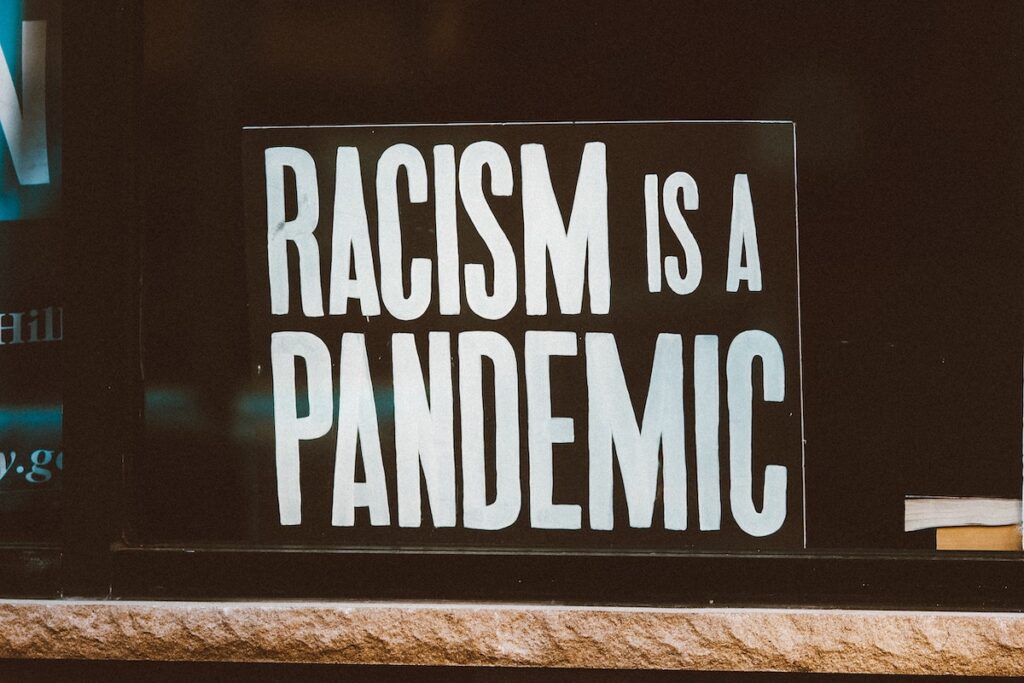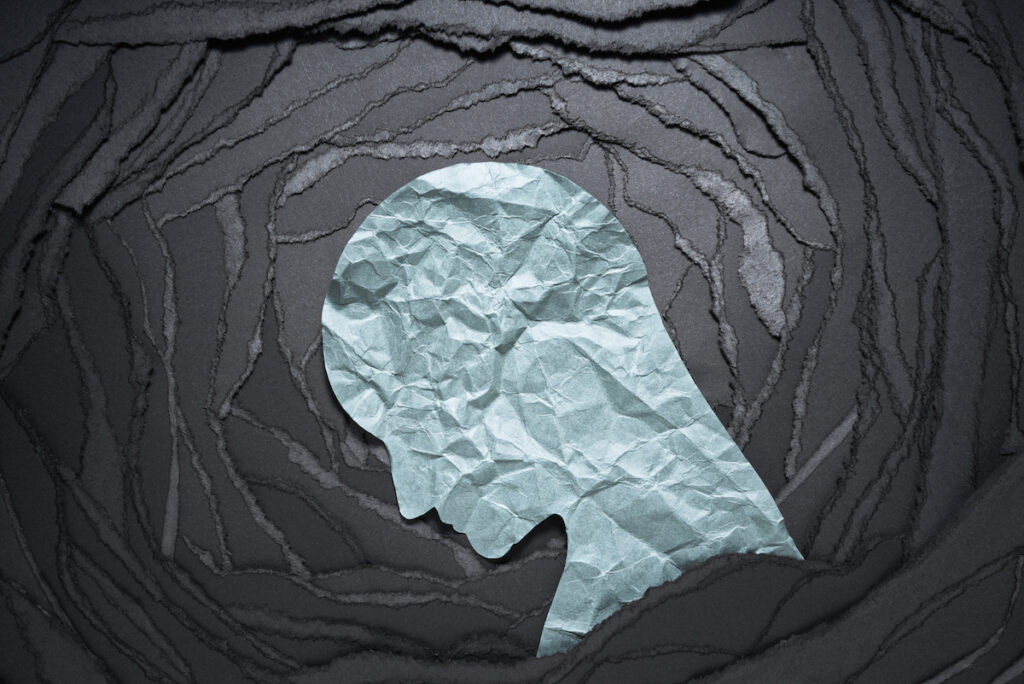
Multiracial individuals have heritage from two or more racial categories. Research has shown that compared to various other racial groups, multiracial people experience worse mental health outcomes, such as substance misuse (Goings et al., 2018). A prominent reason is the encounters with discrimination faced by people of colour, for example, harassment and racial discrimination unique to them, including familial discrimination and racial identity invalidation. The former refers to a range of problematic behaviours perpetrated by one’s family members, such as stereotyping (Franco et al., 2019). Whereas racial identity invalidation involves others denying a multiracial individual’s racial identity or imposing an identity with which the multiracial person does not identify (Franco et al., 2019).
There is currently limited understanding of how various forms of racial discrimination impact multiracial individuals’ mental health. Therefore, a recent study by Franco and colleagues (2021) aimed to understand how racial discrimination faced by people of colour, familial discrimination, and racial identity invalidation impact their mental wellbeing.

Multiracial people often experience worse mental health outcomes due to various forms of discrimination. This research (Franco, 2021) looks at how different kinds of discrimination can impact on the mental health of people with multiracial heritage.
Methods
475 multiracial participants completed an online survey. The largest multiracial subgroups within the sample were Asian/White (15.4%), Black/White (14.7%), unspecified (14.1%), Latin/White (11.2%), and Black/White/Native American (5.5%).
The survey explored participants’ depressive symptoms, anxiety symptoms, perceived stress, and negative affect via standardised measurements, such as PHQ-9 and GAD-7.
The survey also explored different types of discrimination:
- Discrimination: The racial discrimination and lack of acceptance subscales from the Multiracial Challenge and Resilience Scale measured general racial discrimination and familial discrimination
- Racial identity invalidation: The racial identity invalidation scale assessed i) invalidation caused by behaviours that conflicted with general racial stereotypes about prototypical racial behaviour, ii) invalidation caused by having a non-prototypical racial appearance, and iii) discrimination based on a mistaken sense of one’s racial background.
The authors conducted preliminary analyses between the demographics and outcomes where age, income, and gender were associated with at least one of the outcome variables. The authors controlled for these variables and performed a latent factor analysis and a latent class analysis.
In the Latent Factor Analysis, the researchers assessed whether predictor factors, i.e. general and familial racial discrimination, behavioural, phenotype and identity incongruent invalidation, were associated with psychological maladjustment. The latter was determined by participants’ depressive and anxiety symptoms, stress, and negative affect.
Income and education were found to be associated with psychological maladjustment. Furthermore, familial discrimination, behavioural invalidation and phenotype invalidation were associated with psychological maladjustment whereas general racial and identity incongruent discrimination were not.
In the Latent Class Analysis, the researchers assessed how the sample clustered together across several types of racial discrimination. A four-class model was chosen to allow for more conceptual variation in class profiles whilst maintaining adequate statistical power.
Results
Racial discrimination differences
- Class 1 (n = 212) was labelled “low discrimination” because lower levels of racial discrimination were experienced compared to the other classes
- Class 2 (n = 154) was labelled “racial identity invalidation” because this class experienced relatively high levels of racial identity invalidation, but lower levels of general and familial discrimination
- Class 3 (n = 58) was labelled “general-familial discrimination” because of relatively high general racial and familial discrimination levels, but lower levels of racial identity invalidation
- Finally, class 4 (n = 49) was labelled “high discrimination” because the highest levels of discrimination were experienced compared to other classes.
Demographic differences
- Gender and income were distributed equally across classes
- However, education and racial background were unequally distributed across classes:
- The proportion of university graduates (43.6%) and Black/White Biracial people (49.3%) were overrepresented in the invalidation class,
- whilst the proportion of university graduates (29.8%) and Black/White Biracial people (24.6%) were underrepresented in the low discrimination class.
Mental health differences
Compared to other classes, the low discrimination class experienced less negative affect, stress, anxiety and depressive symptoms, whilst the high discrimination class experienced the most severe mental health outcomes.

Among multiracial individuals in this study, psychological maladjustment was found to be associated with income, education, and different types of discrimination.
Conclusions
The present study demonstrated how the combination of racial discrimination, i.e. general racial discrimination and familial discrimination, affects multiracial people’s mental health. For instance, Black/White multiracial individuals are more likely to experience racial identity invalidation and familial discrimination, leading to heightened levels of depression and anxiety.
Therefore, efforts should be made to address the discrimination faced by multiracial individuals, e.g. through cultivating more affirming environments, and mental health practitioners should be aware of its impact on their mental health.

The findings of this study indicate that multiracial individuals experience various forms of discrimination, e.g. general racial discrimination, discrimination from family, and racial identity invalidation, which appears to impact their mental wellbeing negatively.
Strengths and limitations
This was the first study exploring how different forms of discrimination faced by multiracial individuals impact their mental health. Disseminating these findings allows people of colour and their supportive allies to become more aware of the unique forms of discrimination this community faces. This may allow non-multiracial individuals to be educated on the unique forms of discrimination in multiracial people and could subsequently reduce the prejudice experienced in this community.
Moreover, only 1.8% of data was missing therefore imputed data was unlikely to have introduced systematic bias. The research team also ensured the sample was adequately sized by following how many participants are needed when conducting a latent factor analysis and a latent class analysis. Therefore, it is likely that the findings obtained from the present study are valid.
There are some limitations in the current study. The questionnaire used to measure discrimination was explicitly created for multiracial people; therefore, it can detect unique forms of discrimination experienced within this community. However, it does not account for general forms of prejudice, which can be similar to that of non-multiracial individuals. This limits understanding of how general racial discrimination impacts mental wellbeing.
Furthermore, 81.9% of the sample was part-white. Thus, findings may not be generalisable to non part-white multiracial individuals and may further contribute to the invisibility and exclusion experienced by non part-white multiracial (i.e., Asthana, 2004; Holiday, 2019).
This study also used a cross-sectional design; therefore, a causal relationship between racial discrimination and mental health among multiracial individuals cannot be inferred.

Future studies investigating this topic should assess how the experience of both specific and non-specific forms of discrimination affects mental wellbeing in multiracial people, and explore the experiences of multiracial individuals who are non-part-white multiracial.
Implications for practice
Considering that racial identity invalidation possibly plays a role in developing depressive symptoms, anxiety, stress, negative affect and maladjustment, efforts should be made to cultivate more affirming environments for multiracial people, namely, by validating their identities.
Misconceptions about multiracial people should be addressed by educating both white individuals and people of colour. Further, the finding that black/white multiracial individuals may experience increased rates of discrimination should guide therapists and psychologists to encourage these individuals, in particular, to form a healthy racial identity. This could be done by clinicians encouraging self-definition for Black/White biracial clients. However, practitioners should also be reflective on the different identities someone may hold and how these intersect. For example, a previous Mental Elf blog discussed how bisexual individuals also experience identity invalidation; therefore, a bisexual multiracial individual may experience overlapping forms of discrimination.
Familial discrimination predicted adverse mental health outcomes; therefore, family therapists could benefit from discussing possible stereotyping, racist comments, and vicarious discrimination with families and how this could negatively impact the multiracial family member’s mental health. Moreover, therapists could help signpost resources to multiracial individuals that support their racial identity and develop their clients’ self-esteem to help them cope with invalidating experiences.

Clinicians should be aware of the importance of facilitating positive multiracial identities on an individual and community level to enhance wellbeing among this community.
Statement of interests
None.
Links
Primary paper
Franco, M., Durkee, M., & McElroy-Heltzel, S. (2021). Discrimination comes in layers: Dimensions of discrimination and mental health for multiracial people. Cultural Diversity and Ethnic Minority Psychology.
Other references
Asthana, A. (2004, July 2004). The invisible colour between black and white. The Guardian.https://www.theguardian.com/uk/2004/jul/11/race.world
Franco, M. G., & O’Brien, K. M. (2018). Racial identity invalidation with multiracial individuals: An instrument development study. Cultural Diversity and Ethnic Minority Psychology, 24(1), 112.
Goings, T. C., Salas-Wright, C. P., Howard, M. O., & Vaughn, M. G. (2018). Substance use among bi/multiracial youth in the United States: Profiles of psychosocial risk and protection. The American Journal of Drug and Alcohol abuse, 44(2), 206-214.
Holliday, G. (2019, May 14). Like Prince Archie, I am one-quarter black and have spent my life dealing with my ‘invisible identity’. Glamour. https://www.glamourmagazine.co.uk/article/grace-holliday-invisible-identity
Salahuddin, N. M., & O’Brien, K. M. (2011). Challenges and resilience in the lives of urban, multiracial adults: An instrument development study. Journal of counseling psychology, 58(4), 494.
The Economist. (2020, Oct 3). Britain’s mixed-race population blurs the lines of identity politics. The Economist.https://www.economist.com/britain/2020/10/03/britains-mixed-race-population-blurs-the-lines-of-identity-politics
Photo credits
- Photo by Jon Tyson on Unsplash
- Photo by Brooke Cagle on Unsplash
